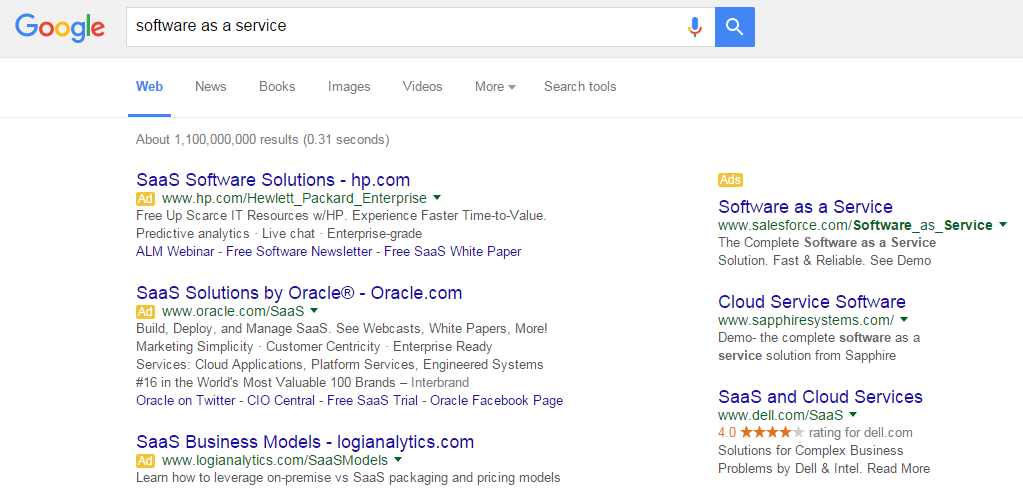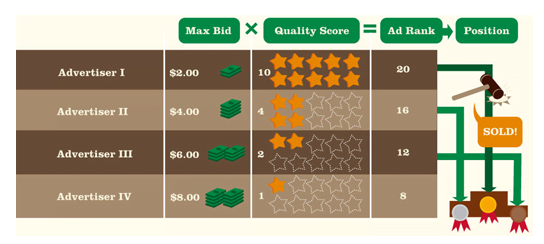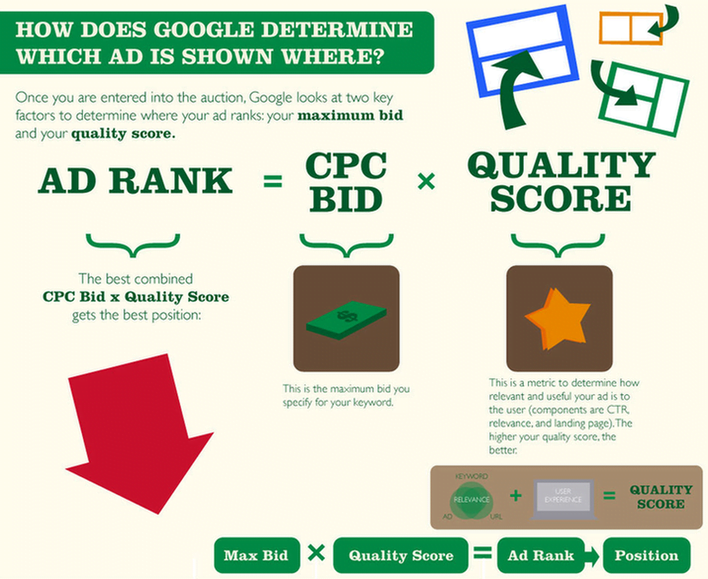
Ad Position: What Is Ad Position & Why Does it Matter?
In PPC marketing, your ad position can have a big impact on the results of your campaigns. Precisely where your ads will be positioned on the search engine results page is determined by a relatively simple process, but there’s a lot you can do to achieve better ad position. In this guide, we’ll explain how ad position works and how you can improve your ad position.
What Is Ad Position?
Ad position refers to the position on a search engine results page (or SERP) in which your advertisements appear in relation to other ads on the page. Ad position, or ad rank, is determined by the following formula:
Ad Position = Max Bid x Quality Score x Expected Impact of Extensions
Even highly optimized advertisements do not remain static in terms of their positioning. Paid search platforms such as Google Ads and Microsoft Ads function as an auction, which means that every time a user performs a search – even multiple searches using the exact same search criteria – the position of your ads may change. However, ad optimization is crucially important, and can help your ads achieve consistently strong positioning on the SERP.
What Affects Ad Position?
There are only a couple of factors that affect ad position, but advertisers on Google AdWords may not be as concerned with the same metrics as advertisers on Bing Ads. This is because the two platforms calculate ad position slightly differently, despite similarities in terms of how each platform functions.
Google AdWords and Quality Score
For AdWords advertisers, the single most important metric in determining ad position is Quality Score, an aggregate score that encompasses many different individual PPC metrics.
As its name suggests, Quality Score is a baseline indication of the overall quality of your ad. The higher the Quality Score, the “better” the ad is considered to be by Google. Better ads are more likely to be relevant and helpful to searchers – a primary objective for Google as a search engine – and as such are more likely to achieve better ad position.
Although Google’s precise methodology for calculating Quality Score remains a well-kept industry secret, we do know that Google calculates Quality Score using an approximation of the following formula:
Relevance – how relevant your ad is to the user’s search query – is determined by assessing several factors, such as:
- Click-through rate
- Relevance of keywords to their associated ad groups
- Landing page relevance and optimization
- Relevance of the ad text
- Overall historical account performance
Quality Score is a complex topic, but for now, all you need to know is that the more optimized and relevant your ads are, the higher your Quality Score will be. The higher your Quality Score, the better ad position you are likely to achieve.
In the following figure, you’ll see that Advertiser I can achieve a higher ad position, due to their higher Quality Score, and actually pay less:
To read more on Google AdWords’ Quality Score, read this comprehensive PPC University guide to Quality Score and how it affects PPC.
Microsoft Ads Quality Score
Like Google Ads, Microsoft’s PPC platform also features a Quality Score metric. However, while Microsoft Ads calculates Quality Score in a similar fashion as Google Ads, the overall Microsoft Ads algorithm treats Quality Score differently, placing slightly less emphasis on Quality Score and evaluating it in closer relation to other account metrics and overall performance.
Advertisers with slightly lower Quality Scores may still be able to achieve strong ad positioning, as Microsoft Ads evaluates Quality Score in a more relative way than Google. However, Microsoft Ads calculates Quality Score in much the same way as Google Ads, with keyword relevance and click-through rate being prime indicators of a quality ad.
Image via Bing Ads
To learn more about Bing Ads and its approach to Quality Score and ad position, read this interview with Microsoft Ads Evangelist John Gagnon.
Ad Position and Ad Rank
Ad position is also known as ad rank, and the two terms are largely used interchangeably. Ad rank is essentially a formula used to determine ad position that multiplies your Quality Score with your maximum cost-per click bid, or CPC.
Higher ad rank results in better ad position, which, in turn, often results in higher click-through rates. High click-through rates, in turn, positively affect Quality Score. However, it’s important to note that Quality Score is normalized for ad position, meaning your Quality Score will not increase unless your click-through rate is higher than the expected CTR for that ad position. You might get more clicks bidding for a higher ad position, but it will not automatically increase your Quality Score.
Improve Ad Performance with WordStream’s Free Grader Tool
Running an effective paid search campaign is an ongoing, holistic process. Advertisers who are willing to consistently optimize and refine their campaigns according to PPC best practices are much more likely to succeed. However, managing even the simplest PPC campaign takes time and effort, which is why we created WordStream’s tools to help small businesses succeed with paid search.




